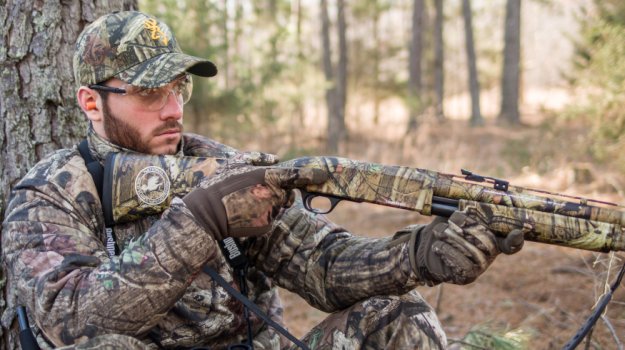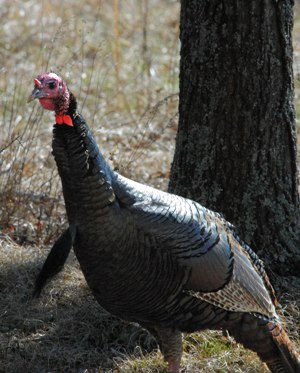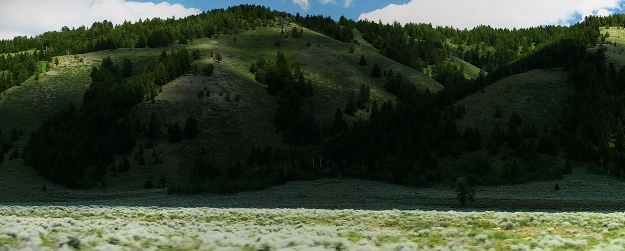
Editor’s Note: Bob Walker of Livingston, Alabama, a Mossy Oak turkey pro, also is one of the hosts on the Mossy Oak “Turkey THUGS” TV show. Walker has been a turkey hunting guide at Bent Creek Lodge in Jachin, Ala., for more than 30 years and has hunted turkeys his entire life. Walker believes if you know what the turkey knows, then you can take more toms.
I've watched hundreds of hunters miss turkeys. When the turkeys hear that big explosion and see pellets whizzing past their heads, they know the time has come to leave and to leave quickly. Those turkeys understand that. But I don’t think turkeys realize they’ve been able to escape, because the hunter hasn’t had his cheek up against the stock before he pulls the trigger.
Some hunters don’t have turkey scopes on their shotguns but attempt to sight in with just the beads on the ends of their shotguns. Most likely, these hunters don’t put their cheeks on their stocks, which also will cause them to miss. The advantage of using a turkey scope on your turkey shotgun is that it restricts your view. Then more than likely, you’re only looking at the head and the neck of the turkey in the scope before you squeeze the trigger. Because scopes generally have crosshairs or red dots in them, you’ll automatically focus on the aiming point and putting that aiming point where the turkey’s wattles meet the feathers on his neck before you squeeze the trigger. If you're trying to shoot a turkey with only the bead on the end of the shotgun, and you’ve been holding that gun up at the ready for a while before the turkey gives you the shot, often, the muscles in your arm, your shoulder and your back will weaken. Before you're ready to take the shot, the barrel of the shotgun will fall down somewhat. Once the turkey steps within range, and you're ready to take the shot, you don’t readjust the shotgun.
 The hunter must make sure the butt of the shotgun is in the pocket of his shoulder, and that he doesn’t re-sight his gun before he takes the shot. Sometimes a hunter will push the barrel of the shotgun up, see the bead on the end of the barrel and shoot without having his or her cheek against the stock. Most of the time, the hunter will shoot high over the turkey’s head. The turkey never feels any of the shot, but he definitely hears the shotgun fire and the pellets whizzing over his head. I'm sitting right beside most of my clients when the turkey starts to come within range. As they’re preparing for the shot and just before they take the shot, I usually whisper, “Make sure you can feel your stock against your cheek.”
The hunter must make sure the butt of the shotgun is in the pocket of his shoulder, and that he doesn’t re-sight his gun before he takes the shot. Sometimes a hunter will push the barrel of the shotgun up, see the bead on the end of the barrel and shoot without having his or her cheek against the stock. Most of the time, the hunter will shoot high over the turkey’s head. The turkey never feels any of the shot, but he definitely hears the shotgun fire and the pellets whizzing over his head. I'm sitting right beside most of my clients when the turkey starts to come within range. As they’re preparing for the shot and just before they take the shot, I usually whisper, “Make sure you can feel your stock against your cheek.”
For my personal hunting, I love a red dot turkey scope, because you don’t have to worry about your shooting position, your cheek weld to the stock or where the shot will hit the turkey. When you put that red dot on the wattles at the base of the turkey’s neck, if your gun is sighted-in properly, that’s where your shot will land.
I was hunting in Florida last year when to get the shot, I had to move my shotgun from my right shoulder to my left shoulder. I had to take the shot as though I was a left-handed shooter, even though I was a right-handed shooter. I couldn’t get the dot in my scope to line-up in the center of my scope. The red dot was off on the left-hand side of my scope. However, I've learned from experience that regardless of where the red dot is in my scope, as long as it’s on the spot I want to hit, then when I squeeze the trigger, I can feel confident the gobbler will go down.
When I squeezed the trigger this time, I told myself, “I'm going to learn if putting the red dot where you want your pattern to hit is really true or not.” After I squeezed the trigger, I saw my turkey on the ground in front of me. So, if you’re consistently missing turkeys by using the bead on the end of the shotgun to aim with, I recommend that you have a shotgun scope mounted on your shotgun. I prefer the red dot scopes, because I've proven, at least to myself, that wherever that red dot is on a turkey’s neck, that’s where my pattern will land.
To get a free turkey eBook, “The Turkey Gobbler Getter Manual,” go to http://johninthewild.com/free-books.
Day 1: Bob Walker Says a Turkey Gobbler May Hear Farther Than He Can See
Tomorrow: Turkeys Don’t Know They’re Teaching You about Turkey Hunting with Bob Walker



























